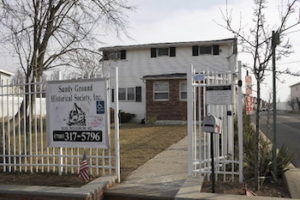
*The Sandy Ground community is celebrated on this date in 1828.
Founded by free Blacks before the American Civil War, Sandy Ground is located in Staten Island, New York. On this date, just months after the abolition of slavery in New York, the first documented land purchase was by a Black man named Captain John Jackson. Sandy Ground was originally called Harrisville, but it soon changed to Little Africa before receiving its current name, Sandy Ground, due to the infertility of the land.
Sandy Ground also served as anessentialt stop on the Underground Railroad and is one of the oldest continuously settled free Black communities in the United States. After slavery in New York was abolished in 1827, freedmen settled in the area known since colonial times as Sandy Ground, which was located around the intersection of Bloomingdale and Woodrow Roads in Rossville.
These early settlers were skilled in the oyster trade and brought this knowledge to Staten Island. MAAP (Mapping the African American Past) discusses the link between Maryland Oyster Workers in the 1800s and Sandy Ground. Oyster harvesting on Staten Island was mainly conducted on the island's south shore. Prince's Bay was thecentraln hub within walking distance from Sandy Ground.
Oyster farming ended around 1916 due to water pollution in the harbor. Sandy Ground African Methodist Church was founded around 1850. The Sandy Ground Historical Museum, located within the Sandy Ground, is dedicated to the oldest continuously inhabited free Black settlement in the United States. The museum houses the most extensive documentary collection of Staten Island's Black culture and history. It may also be home to America's only intact 18th-century African cemetery. Several of the community's historic structures are still extant, including five designated New York City landmarks, a church, a cemetery, and three homes. Some residents also live in the original community. Rossville is among the oldest surviving communities in the United States,